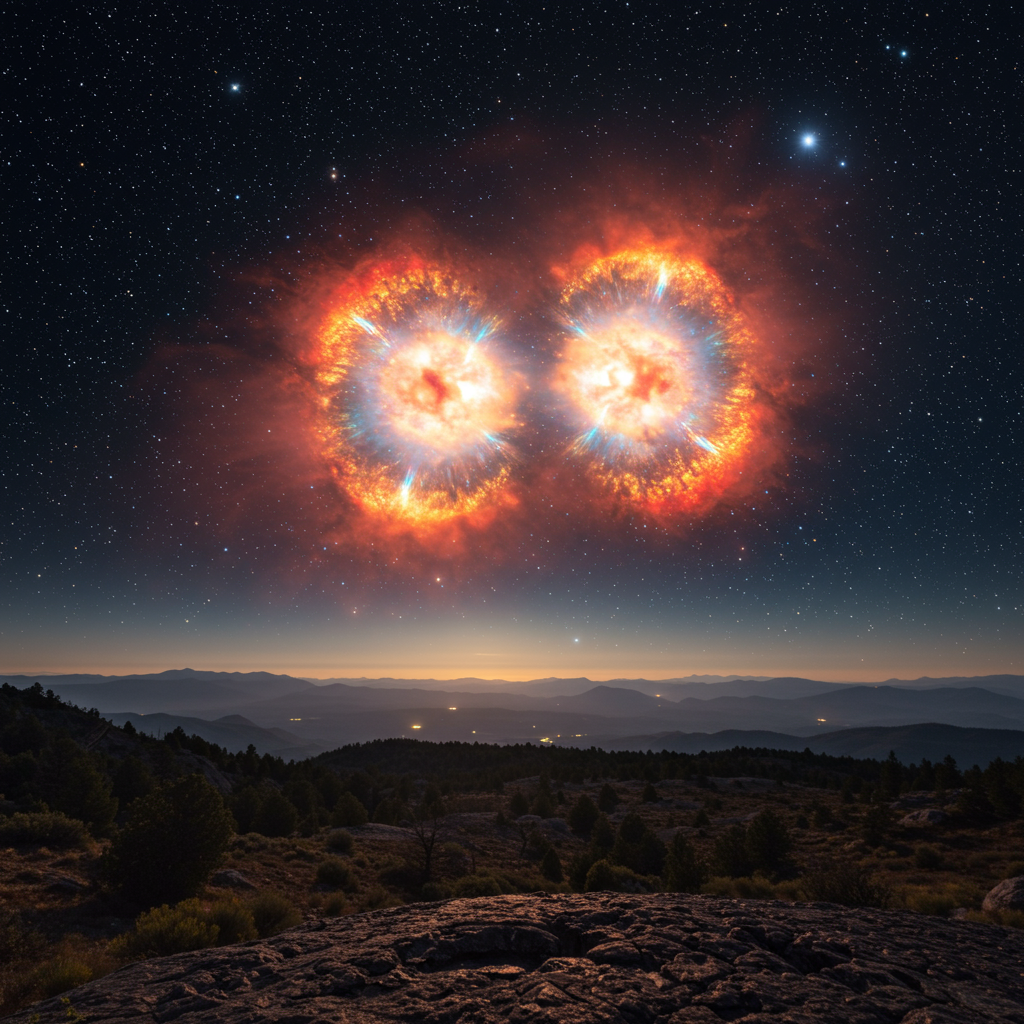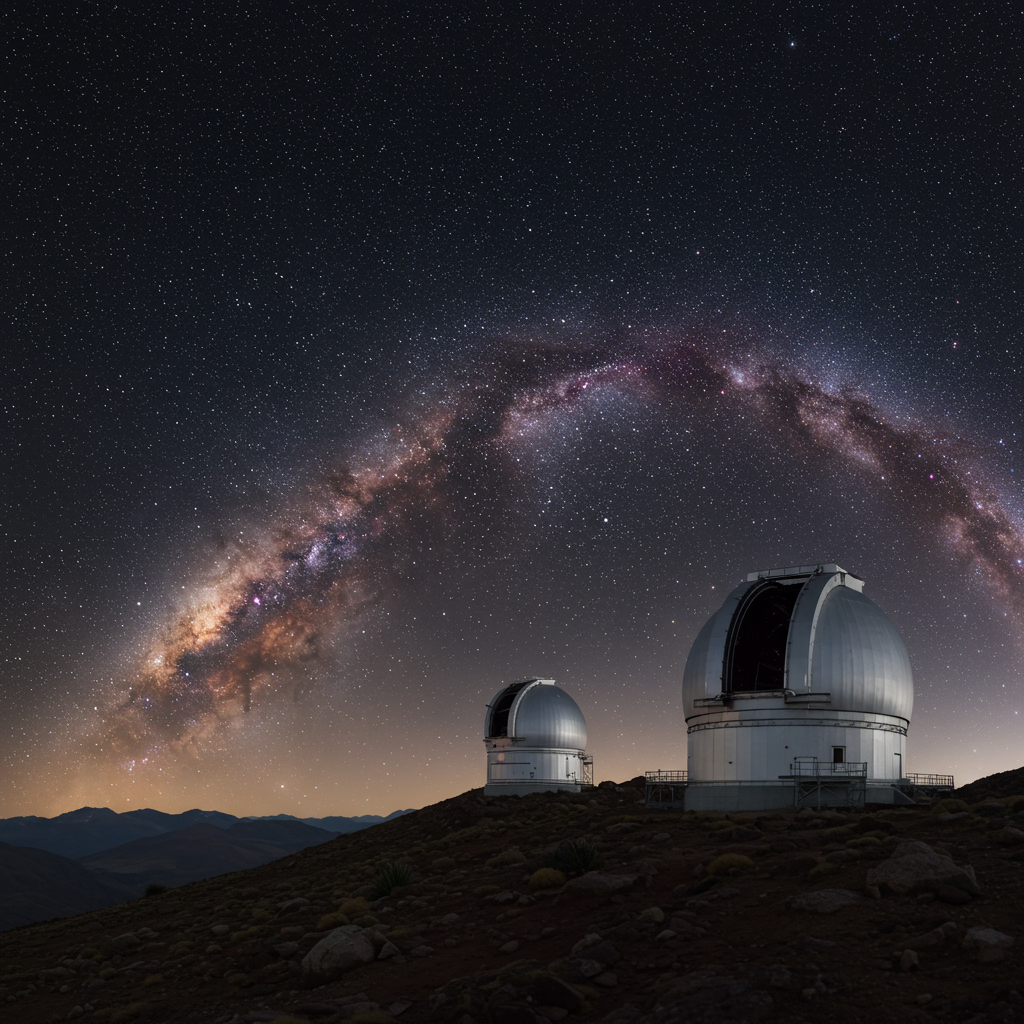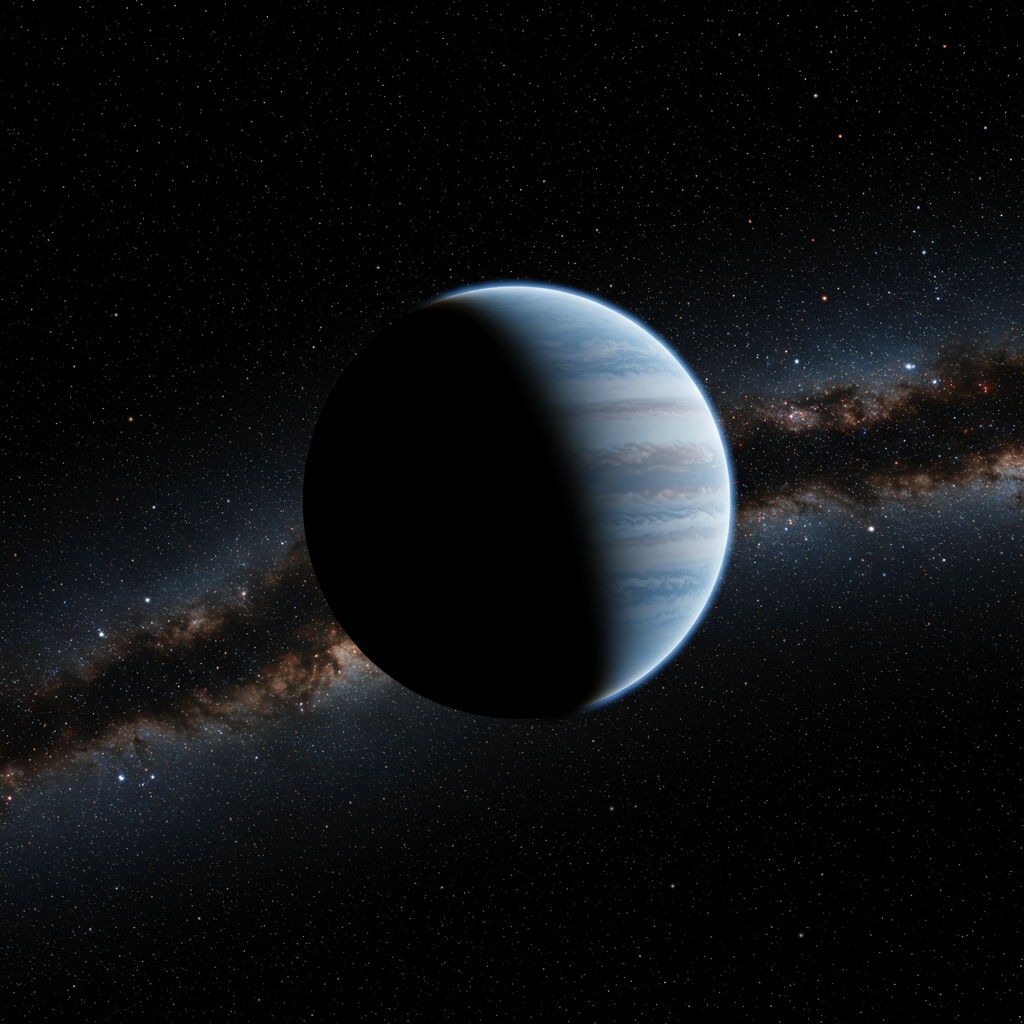Prepare for an extraordinary celestial spectacle! In a potentially unprecedented astronomical event, two stellar explosions, known as classical novas, have recently flared up in the night sky, becoming bright enough to see without a telescope. This incredibly rare simultaneous appearance offers a unique opportunity for stargazers to witness cosmic fireworks from Earth.
these aren’t “new stars” forming, but rather intense bursts of light from dramatic events in distant binary star systems. For observers under dark skies, especially in the Southern Hemisphere, this could be a once-in-a-lifetime viewing experience.
What Exactly Are Classical Novas?
Classical novas are powerful, yet contained, thermonuclear explosions occurring on the surface of white dwarf stars. These events happen within specific binary star systems where two stars orbit each other. One star is typically a dense white dwarf – the compact remnant of a Sun-like star that has exhausted its nuclear fuel. Its companion is usually a larger star, often a red giant or a main-sequence star.
The white dwarf’s intense gravity pulls material, primarily hydrogen gas, from its companion star. This stolen gas accumulates on the white dwarf’s scorching hot surface. Over vast periods, sometimes thousands of years, enough material builds up, increasing the pressure and temperature in the accreted layer.
When this layer reaches a critical temperature and density – tens of millions of degrees Fahrenheit – a runaway thermonuclear reaction ignites. This explosive burning of the hydrogen fuel triggers a sudden, brilliant outburst of light. Crucially, unlike a supernova which utterly destroys the star, a classical nova only blows off the outer layers of accumulated gas. The white dwarf star itself survives the explosion, and the process of accumulating material from its companion can eventually begin again, potentially leading to future outbursts.
An Unprecedented Astronomical Alignment
The truly remarkable aspect of the current sky show is the appearance of two classical novas visible to the naked eye almost simultaneously. Astronomers like Stephen O’Meara have extensively researched historical records and found no clear instance of two such events occurring at the same time and reaching their peak naked-eye brightness concurrently.
The first nova, designated V462 Lupi, burst into view on June 12 within the constellation Lupus (The Wolf). Its discovery was made by the All-Sky Automated Survey for Supernovae (ASASSN) team at Ohio State University. Initial observations showed it was too faint for casual viewing, but it rapidly brightened over the next few days.
Less than two weeks later, on June 25, a second nova, V572 Velorum, was detected by astronomers John Seach and Andrew Pearce in the constellation Vela (The Sails). The timing of these two events appearing so close together in the night sky is considered exceptionally rare. While a single naked-eye nova might occur once a year at most, seeing two at once is almost unheard of. Even a previous notable case in 1936 involving V630 Sgr and V368 Aql saw them appear within weeks, but they didn’t reach their maximum brightness simultaneously. A more recent, though fainter, instance occurred in 2018 with FM Circini and V906 Carinae briefly peaking near naked-eye limits on the same day.
Brightness, Location, and Visibility
The brightness of celestial objects is measured using a magnitude scale, where lower numbers indicate brighter objects. The threshold for naked-eye visibility under dark skies is typically around magnitude +6.
V462 Lupi reached its peak brightness on June 20, shining at a magnitude of +5.5. V572 Velorum proved even brighter, peaking at magnitude +4.8 on June 27. Both objects, even slightly past their peak, currently remain within or very near the naked-eye visibility limit (approximately +5.9 for V462 Lupi and +5.5 for V572 Velorum recently).
Both of these spectacular events are located within constellations situated in the southern sky. This means they are most favourably positioned and easiest to see from the Southern Hemisphere. Observers in countries like Australia, New Zealand, Chile, Argentina, and South Africa have the best chance to witness both novas high above the horizon.
For those in the Northern Hemisphere, seeing these novas presents more of a challenge. V462 Lupi in Lupus is positioned low on the southern horizon shortly after sunset and may be visible from the southern parts of North America, potentially even as far north as some central US states under ideal conditions. V572 Velorum in Vela is generally less likely to be seen from most of North America, though it could potentially be glimpsed from extreme southern regions like Mexico, California, and Texas, hugging the southern horizon.
While technically visible to the naked eye from dark locations, binoculars or a small telescope will significantly enhance the view and make spotting these relatively faint objects much easier, especially from less optimal viewing locations or if light pollution is present. Astrophotographers like Eliot Herman have already captured stunning images, showcasing V572 Velorum’s brilliant blue-white light and V462 Lupi’s more purplish hue.
First-Time Appearances vs. Recurring Outbursts
Astronomers classify some novas as recurring, meaning they are known to explode periodically. A famous example is T Coronae Borealis (T CrB), often called the “Blaze Star,” located in the northern constellation Corona Borealis (The Northern Crown). T CrB is a binary system where a red giant star feeds material to a white dwarf, causing an explosion roughly every 80 years. Scientists have been anticipating its next eruption, expected sometime in 2024 or 2025, based on observed brightness changes in the system.
The anticipated T CrB nova is expected to briefly brighten to about magnitude 2-3, comparable to Polaris or some stars in the Big Dipper, making it easily visible from the Northern Hemisphere for a short period.
However, the two current novas, V462 Lupi and V572 Velorum, are notable because these are their first recorded appearances. Since astronomers have not witnessed them erupt before, it is currently unknown if they are recurring novas or if and when they might explode again in the future. What is certain is that, like all classical novas, their brilliant light will gradually fade over the coming weeks, eventually becoming too dim to see without powerful telescopes.
This brief period of simultaneous naked-eye visibility underscores the fleeting nature of these cosmic events and highlights the dynamic, ever-changing nature of our universe, even the parts that appear fixed and unchanging to our eyes. Looking up now provides a rare connection to the powerful processes occurring light-years away.
Frequently Asked Questions
What exactly is a classical nova and how does it differ from a supernova?
A classical nova is a stellar explosion that occurs on the surface of a white dwarf star within a binary system. It happens when the white dwarf pulls material, mainly hydrogen, from a companion star. When enough material accumulates, it ignites in a thermonuclear explosion on the white dwarf’s surface, causing a sudden, dramatic increase in brightness. A supernova, in contrast, is a much more powerful explosion that marks the catastrophic death of a massive star or the complete disruption of a white dwarf in a different scenario. Novas involve only the outer layers and allow the white dwarf to survive, while supernovae destroy the star entirely.
Where in the sky can I see these two new novas, V462 Lupi and V572 Velorum?
Both novas are located in the southern sky, within the constellations Lupus (V462 Lupi) and Vela (V572 Velorum). This makes them best viewed from the Southern Hemisphere. From the Northern Hemisphere, particularly the southern parts of North America (like Mexico, California, Texas, and possibly further north for V462 Lupi), they may be visible low on the southern horizon shortly after sunset. While technically naked-eye visible under dark skies, using binoculars or a telescope is highly recommended for easier viewing, especially from less ideal locations.
Are these recent novas related to the anticipated T Coronae Borealis (‘Blaze Star’) explosion?
No, the recent appearances of V462 Lupi and V572 Velorum are separate events from the anticipated nova of T Coronae Borealis (T CrB). V462 Lupi and V572 Velorum are first-time recorded classical novas, meaning astronomers don’t know if or when they might explode again. T Coronae Borealis, located in the northern sky, is a well-known recurring nova expected to erupt roughly every 80 years, with its next outburst predicted sometime in 2024 or 2025. While both are classical novas, they are distinct systems in different parts of the sky with different recurrence behaviours.
Conclusion
The simultaneous visibility of two naked-eye classical novas is a fleeting and exceptionally rare event, potentially marking a historical first. V462 Lupi and V572 Velorum offer a timely reminder of the dynamic universe we inhabit. As these cosmic firecrackers gradually fade from our view over the coming weeks, they leave behind a legacy of scientific intrigue and provide a powerful incentive to simply look up. If you have the chance, seek out a dark sky location and witness this incredible stellar display before it disappears.




